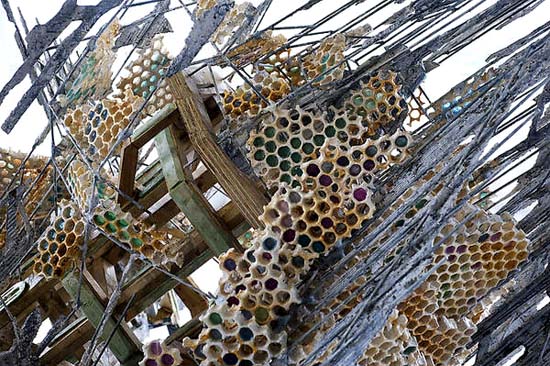Fusing labyrinthine forms with modern materials, Syrian-born artist Diana Al-Hadid’s work elegantly meshes physics with form.
Starting May 15, Al-Hadid’s installation “Water Thief” will be displayed at the Hammer Museum, her first solo museum exhibition. Unlike many of her past works, composed of individual pieces that viewers could walk around, this installation features several sculptures that fill the gallery and immerse viewers in the art itself.
However, what really sets the exhibit apart is that all the pieces together create a functioning water clock, an ancient time-telling device initially invented during the 13th century by Islamic astronomer Al-Jazari.
“He’s the guy that got me curious about these devices,” Al-Hadid said. “But I didn’t model it after his work, I combined a few designs to make my clock. (Nonetheless) it got me curious about how the ancients charted time and how they perceived time.”
In contrast to Al-Hadid’s past pieces, which have been very focused on space or architecture, “Water Thief” emphasizes motifs of time, blending elements of the ancient and modern.
“A lot of my sources or inspirations have always been from the far future or the very distant past,” Al-Hadid said. “So I thought it would be nice to make a piece about time.”
Drawing inspiration from several time periods, Al-Hadid uses many different mediums to create her work.
“I use what I call the Crayola box of sculptural tools,” said Al-Hadid. “Metal, plaster, wood, fiberglass. The materials are all pretty elemental.”
However, although the materials are industrial, Al-Hadid’s style is derived from deconstructing classical Baroque architecture, juxtaposing common materials like cardboard with the elegance of Baroque ornamentalism.
“(Al-Hadid) is an extraordinarily gifted sculptor,” said Anne Ellegood, curator for the exhibit. “She has a mastery of materials and construction, making her work very physical and detailed, and thus interesting to look at, but she also makes work that is very provocative and thoughtful in terms of the ideas.”
Naima Keith, curatorial research fellow at the Hammer, said that working through the work conceptually with Al-Hadid was a pleasure.
“(Al-Hadid) is very smart. She’s very open to talking about her ideas and the direction her work is taking,” Keith said.
When it comes to defining her work, Al-Hadid is hesitant to place labels on her style.
“I feel like people tell me what my themes are more than I tell people what my themes are,” Al-Hadid said. “I know what I’m interested in, but I have a hard time attempting to categorize what my themes are.”
She said that her work is guided by an interest in the aesthetic arrangement rather than any one idea in particular.
“I tend to think of things in terms of lines and planes and triangles and boundaries and skins ““ it’s more of an organizing principle, or how I begin thinking about objects or space,” Al-Hadid said.
Al-Hadid’s contemporary aesthetics complement the Hammer’s own exploratory projects.
“Working with Diana has been great,” said Ellegood. “She has tackled this show with great energy and commitment, making an extraordinary new piece for us. I think it’s going to be quite a hit with visitors.”
Just Al-Hadid does not define her art, she also does not have definitive expectations of her audience.
“I hope that they’ll slow down, and they’ll look,” Al-Hadid said. “I spend a lot of time making them and if they just spend a hundredth of the time that I spent, just to look, if someone were to walk around and through something and really look at it from all perspectives, I’d really feel like I achieved something.”
Ultimately, Al-Hadid said that her work is a personal endeavor.
“If (viewers) like it, or they don’t like it, I don’t know,” Al-Hadid said. “I don’t really make anything for that reason. I make it because I want to see it.”
